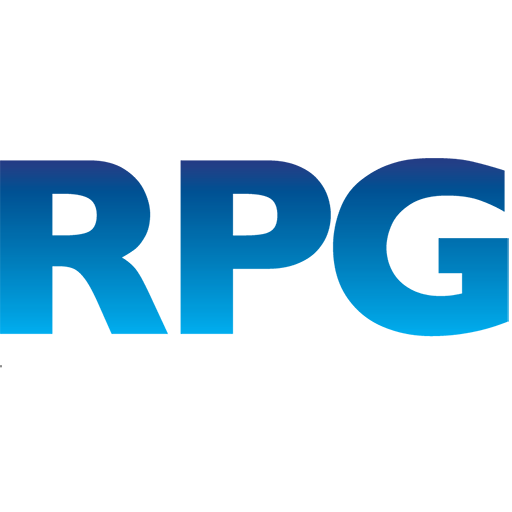Marketing research is expensive, and with good reason – the process of collecting, analyzing and reporting data requires skilled professionals who know how to ensure information and insights are both reliable and valid.
Of course, it’s perfectly normal for someone who wants to conduct marketing research to get sticker shock when they begin speaking to agencies about the actual cost of a project, and it’s also quite normal for those who aren’t adequately funded for research to try to conduct it on a shoestring through do it yourself (DIY) methods, often with questionable results.

On the other hand, we’ve encountered organizations that have been burned by the high cost of conducting marketing research because they’ve gotten very little out of it. When research projects are not designed to meet a specific need and generate information that is either very obvious or which displays things that are already known, it’s hard to justify the cost of those projects, and it’s very easy to cut them.
Clearly, there’s got to be some value to the process of marketing research that justifies its expense. But how do you determine whether the cost of marketing research generates a positive return on investment (ROI)?
Valuable marketing research starts with a clear understanding of what your organization needs to know to support decision-making
For information to have value, there needs to be a central purpose explaining why it needs to be acquired, and without that purpose (which we marketing researchers often call a problem statement or management problem), it’s very likely that the research will be a waste of time and money. Quite often, marketing researchers are consulted about collecting information that is “nice to know” but not “need to know,” and the sad truth is that “nice to know” information tends to sit on a shelf far more often than it’s used to guide decision-making and enhance internal knowledge.
But even when research is supported with a well-defined problem statement, the process tends to be costly, and one-time professional-grade projects often range in the tens of thousands of dollars (or hundreds of thousands if the project is complex enough or requires multiple applications).
That’s enough to make many would-be clients have second thoughts when it comes to hiring a research agency, and it’s not surprising or even shameful for organizations to attempt to go a cheaper route by conducting DIY research with a platform like SurveyMonkey or to take on a graduate student intern to conduct a project or two for a much lower cost. But cheaper work produces less reliable results, and it’s not uncommon for months or even years to be wasted trying to save money on research only to generate a bunch of junky and ultimately useless data in the process.
So, the question that first needs to be asked is, “what’s the cost of making this decision incorrectly?” Weighing the cost of a decision versus the cost of the research required to make the decision correctly provides an excellent estimation for ROI.
---A QUICK CALCULATION YOU CAN USE---- (Keep in mind this is based on my own advice, not formal research) To quickly calculate a research project's potential ROI: Cost of decision being made ÷ Cost of project If the result is less than 2, consider secondary or DIY methods. If the result is less than or equal to 10, consider scaling back the project requirements. If the result is greater than 10, the research will be likely to provide a strong ROI (with the sweet spot occurring where a research project is supporting a decision that has a cost in the millions of dollars.) Remember that the ROI of good research grows if the research can be used to contribute to a broader field of knowledge!
A good rule of thumb is if the decision that is being considered costs around the same as the research required to support it, it’s best to consult free or inexpensive secondary sources instead – case reviews, industry guidelines, available data, DIY surveys and so forth.
If the decision costs around two to ten times the fee for a research project, you’re still not getting a great ROI, so it’s important to ask, “can we scale back the cost of the project?” Perhaps the method you’ve selected is too costly, or the sample size can be scaled back. Perhaps you don’t need a full-service approach and you can make do with a summary report instead of a full report. Perhaps you should engage the research agency to conduct secondary research rather than primary research.
But if a decision costs significantly more than that, chances are good you’re going to get a very positive ROI on your research. I’d suggest the sweet spot occurs somewhere around decisions that can be expressed in the millions of dollars, because the cost of a research project generally pales in comparison to the cost of wasting a million dollars on a bad decision.
To put this in practical terms – if you at a store like Target or Walmart and are considering purchasing a new brand of candy bar, you’re probably not going to spend much time researching that brand’s flavor profile – you’re just going to take the risk, because the cost of making the decision is low and the time required to research the candy bar beyond some cursory online information is high. But if you’re considering buying a Dyson vacuum cleaner and comparing it to a Bissell or a Hoover, you’d be wise to spend some time reviewing your options and perhaps consulting some product reviews and comparative data before you make your purchase.
And if you leave that store to go purchase a car or a house afterwards, you’d better spend some serious time researching your purchase before you make it, or else the consequences could be something you’ll regret for years down the road.

Valuable marketing research is a collaborative exercise
One of the worst mistakes an organization can make is to engage a marketing research department, agency or professional as an order-taker rather than as a partner. Marketing research functions best when the research team is well-informed regarding the details that led up to the research and the manner in which the research will be used internally, and one way to significantly increase the value of research is to invite the research team to be part of some collaborative discussions regarding how research can be best-utilized to solve management problems.
One area where marketing researchers can be particularly valuable as partners is in providing expertise about the end-use of data, which may ultimately lead to the research team helping their client to reframe the management problem that prompted the research. One of the biggest mistakes non-researchers tend to make is in wanting to learn more about the symptoms of a problem (which often translate into very painful issues like declining sales, lower revenues or growing dissatisfaction) rather than to root out what the actual cause of the problem may be. Researching ways to resolve symptoms may lead to some temporary relief, but they (or other related symptoms) will reoccur if the deeper problem isn’t fully understood and addressed.
Researchers can also utilize their expertise to help determine if what’s perceived as a problem falls within expected ranges or not. For example, many organizations want to be top-notch at customer service, but most are going to fall within an average range and some are going to fall well below average. Management may set an arbitrary goal for improving satisfaction, but without having a good understanding of the average range (which can often be found from industry indices or secondary data), that goal is a shot in the dark. A good research partner can not only provide some insight into what a target goal should look like, but also which components of a product or service are most important to customers and which may be common areas of complaint, but have less of a bearing on satisfaction.

Valuable marketing research contributes to a field of marketing knowledge
In the world of academia, research isn’t just completed to sit on a shelf – it becomes part of a broader field of knowledge which can help to inform future studies and to differentiate what is known from what is hypothesized or speculated. It can also be reproduced to see if a study’s results can be replicated or falsified, which is key to ensuring that research is validated the field of understanding is refined.
But one thing many organizations are not good at doing is using research to build up an internal field of knowledge that can be referenced to establish what is already known and what still needs to be known. Rather, many organizations build up voluminous amounts of data and reports and focus on examining trends rather than on solidifying insights.
When research is able to be utilized to resolve a single management problem, its value and ROI are both tied specifically to the outcome of that problem. But often, a problem that occurs once is bound to occur again in some similar form, and having not just a research report to refer back to, but an internal understanding of the data and their broader implications, can help to either mitigate the need for new research or to focus new research more specifically on the particulars of the new problem. Both scenarios greatly enhance the ROI of the original research, and they also ensure that future research will benefit from prior knowledge.
We hope this article has been helpful to you, and we want you to know that we’re here to be a resource however we can be on anything you’d like to know about marketing research!
Please feel free to check out our other articles, watch our Youtube Channel, connect with us on LinkedIn or Facebook or to contact us. We’d love to hear from you!

